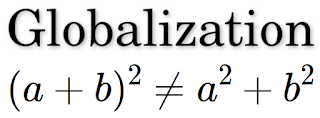Innovation vs. Creativity (or Tactics vs. Strategy)
Nokia Nokia. My first cellular phone was Nokia. Those days Nokia created best cellular phones. Nokia, once a dominant force in the mobile phone industry, has experienced a dramatic decline. From a market capitalization of $550 billion in 2000, it plummeted to just $18 billion. This decline prompts a critical question: Why did Nokia fail while companies like Apple soared to unprecedented heights ? While Nokia excelled at producing high-quality cellular phones, it missed the boat on the smartphone revolution. Smart phones slowly gain more and more customers, and, of course, who bought smart phone did not buy cellular phone. Nokia did not lost it's domain of cellular phones. Nokia just missed this moment when new market of smartphones was created. Those two markets could not coexist. Such situation defined by " Struggle of Informations " model as "antagonistic informations" where only one information will survive and other will totally disappear. The critical ques...


